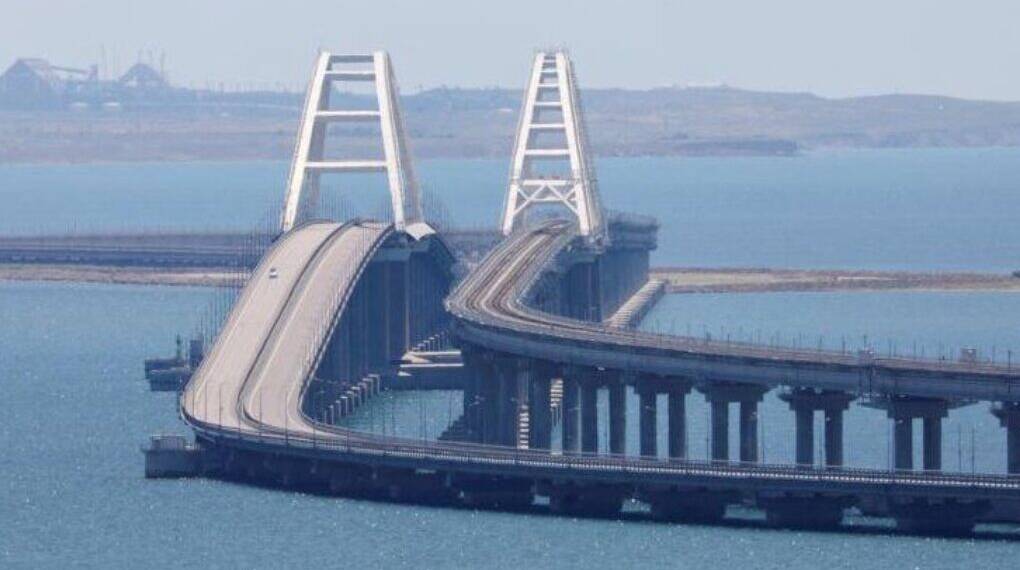The June 3, 2025, underwater attack by Ukraine on the Kerch Strait Bridge is not merely a tactical act of war—it is a calculated blow against a linchpin of Russian logistical, political, and psychological control over Crimea. This is now the third confirmed Ukrainian strike against the bridge since the full-scale invasion began in 2022. Each strike underscores not only Ukraine’s capacity to reach deep into contested territory but also the enduring significance of the structure as a front in the wider information and identity war between Kyiv and Moscow.
Strategic Importance Meets Symbolic Defiance
Constructed after Russia’s controversial annexation of Crimea in 2014, the 19-kilometer Kerch Bridge is the only direct land link between mainland Russia and the Crimean Peninsula. Beyond its utility for civilian transport, it serves as a vital military artery, feeding troops, weapons, and supplies into southern Ukraine. But its significance runs deeper than infrastructure.
To Moscow, the bridge is a triumph of engineering and symbolism—a physical assertion of Russia’s claim to Crimea and a cornerstone of Vladimir Putin’s narrative of restoration and power. It represents, in steel and concrete, the permanence of the 2014 annexation. For Ukraine, the bridge is a grotesque reminder of occupation and a legitimate military target, aiding and abetting what Kyiv considers an illegal and violent presence.
Ukraine’s Rationale: Target the Artery, Weaken the Heart
Ukraine’s repeated targeting of the bridge is a convergence of strategy and symbolism. Disrupting the bridge severs—or at least constricts—the flow of war matériel into southern Ukraine, especially to the contested fronts in Kherson and Zaporizhzhia. It is also a psychological strike: every explosion that damages the bridge chips away at Russia’s image of control and impregnability in Crimea.
This latest strike was a technically complex underwater operation involving 1,100 kilograms of explosives. Ukraine’s SBU (The Security Service of Ukraine) took credit and emphasized that the bridge is now “effectively in an emergency condition,” although independent verification is still pending. If true, the damage is not just structural—it’s geopolitical.
The broader campaign includes deep strikes into Russian territory, such as the “Spider Web” drone offensive that damaged long-range bombers days before the Kerch attack. These are not isolated incidents; they form a deliberate strategy of attrition meant to stretch Russian defenses, erode morale, and challenge the perception that Moscow can protect its strategic depth.
Russian Response: Denials, Defensiveness, and Domestic Narratives
Moscow, predictably, dismissed the extent of the damage and accused Kyiv of terrorism and attacks on civilian infrastructure. Kremlin spokesperson Dmitry Peskov repeated well-worn lines blaming Ukraine for escalating the war and targeting symbols of Russian sovereignty.
But Ukraine has been careful to frame these strikes as targeting military infrastructure. No civilian casualties were reported in this latest attack. By contrast, Russian strikes on Ukrainian cities—including Sumy, Kharkiv, Odesa, and Chernihiv—continue to result in mounting civilian deaths, highlighting the asymmetric nature of suffering in this war.
Crimea: A Battlefield of History and Identity
At the core of this confrontation is Crimea itself. It is a land imbued with layers of cultural, historical, and military value. Home to Russia’s Black Sea Fleet and inhabited by a majority Russian-speaking population, Crimea is central to Russia’s geopolitical aspirations. Yet it is also a place of indigenous resistance, particularly from Crimean Tatars, who oppose Russian control and have faced repression since annexation.
For Ukraine, reclaiming Crimea is about more than sovereignty—it’s about reversing a decade of occupation and preventing further territorial dismemberment. The bridge is therefore not just a target; it is a manifestation of the injustice Kyiv seeks to rectify.
Also read: Russia Retaliates After Ukraine Spider web: War Enters Dangerous New Phase
The Wider Context: Peace Talks and Persistent Violence
The latest attack came amid tentative peace talks in Istanbul, the first face-to-face negotiations in years. But hopes for progress remain dim. Russia’s demands—including Ukraine’s withdrawal from its own sovereign territory and the end of Western support—are unrealistic. Ukraine, for its part, is demanding a full ceasefire and the return of abducted children and prisoners.
As President Zelenskyy aptly put it, without sustained international pressure on the Kremlin, peace remains out of reach. Meanwhile, civilians continue to pay the price. Russia’s nightly bombardments remind the world of the human toll of its military strategy, which did not focus on battlefield success alone but on breaking the will of the Ukrainian people.
Conclusion: The Bridge Will Stand, but the Message is Clear
Whether the Kerch Bridge is ultimately rendered inoperable or rebuilt once more, Ukraine’s message is unambiguous: Crimea is not a settled matter. The bridge remains a flashpoint in the war, not just for its logistical function but for what it represents.
In targeting it, Ukraine is both disrupting a vital supply line and delivering a powerful psychological counterattack. This war is as much about territory as it is about narratives, and the battle for Crimea—and by extension, the Kerch Bridge—is likely to define the next phase of this conflict.
Until either side can agree on terms that acknowledge both the realities on the ground and the deep wounds of history, the bridge will remain a target—and the war will rage on.








